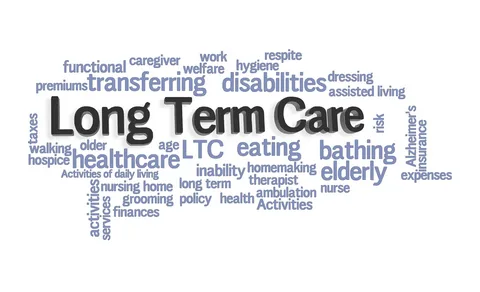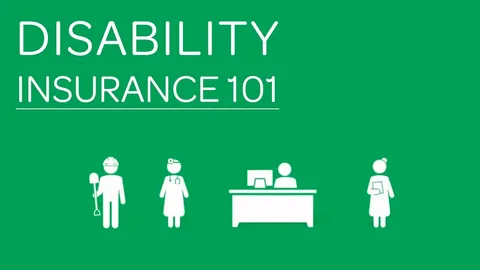Disability Insurance: Protecting Your Income
In an unpredictable world, financial security is a priority for many. One essential yet often overlooked aspect of financial planning is disability insurance. This type of insurance can be a lifesaver, providing income protection when unforeseen circumstances prevent you from working. In this blog, we’ll explore what disability insurance is, why it’s essential, and how to choose the right policy to safeguard your income.
Understanding Disability Insurance
Disability insurance is designed to replace a portion of your income if you become unable to work due to a disability caused by an illness or injury. This coverage is particularly important because many people underestimate the risk of becoming disabled at some point in their lives. The benefits can help cover essential living expenses, allowing you to maintain your lifestyle even in challenging times.
Why You Need Disability Insurance
- The Reality of Disability: According to the Social Security Administration, about one in four 20-year-olds will become disabled before reaching retirement age. These statistics underscore the importance of being prepared for the unexpected.
- Income Replacement: Disability insurance provides a financial safety net by replacing a percentage of your income, typically between 50% to 70%. This allows you to cover essential expenses like rent, mortgage, utilities, and groceries during your recovery.
- Protection Against Debt: Without income, many individuals may struggle to meet financial obligations. Disability insurance helps prevent falling into debt or depleting savings during a challenging period.
Types of Disability Insurance
- Short-Term Disability Insurance (STDI): This type of policy covers a portion of your income for a limited period, usually from a few weeks up to six months. STDI is often provided by employers as part of employee benefits packages and is designed to cover temporary disabilities.
- Long-Term Disability Insurance (LTDI): LTDI provides coverage for an extended period, typically until retirement age or until you are able to return to work. This policy is crucial for protecting your income in the event of a serious illness or injury that requires a long recovery time.
- Supplemental Disability Insurance: If your employer provides basic disability coverage, you may consider supplemental insurance to enhance your benefits. This type of policy can fill in the gaps and provide additional income protection.
Key Features of Disability Insurance Policies
- Elimination Period: This is the waiting period before benefits begin. It can range from a few days to several months. Shorter elimination periods usually result in higher premiums, so consider what you can afford.
- Benefit Period: The benefit period is how long you’ll receive payments once the elimination period is over. Policies can range from a few months to several years or until retirement age.
- Partial Disability Benefits: Some policies offer partial disability benefits if you can return to work but on a reduced schedule. This feature can be crucial during recovery, allowing you to ease back into your job.
- Definition of Disability: Different policies have varying definitions of what constitutes a disability. Some may define it as being unable to perform your specific job, while others may use a broader definition, covering any occupation you are qualified for.
Factors to Consider When Choosing a Policy
- Income Level: Determine how much of your income you need to protect. Ideally, your policy should replace a significant portion to cover essential expenses.
- Occupation: Your profession can influence the risk of disability and the cost of premiums. High-risk jobs may require more comprehensive coverage, while lower-risk jobs may have lower premiums.
- Health Status: Your current health can impact your eligibility and premiums. Pre-existing conditions may lead to exclusions or higher costs, so it’s essential to disclose all relevant health information.
- Cost of Premiums: While it’s important to secure adequate coverage, consider what you can afford in terms of monthly premiums. Balance coverage with affordability to avoid financial strain.
The Application Process
Applying for disability insurance typically involves several steps:
- Research Providers: Look for reputable insurance companies that offer disability coverage. Read reviews, compare policies, and consider financial stability ratings.
- Complete an Application: This may include health questionnaires and detailed information about your occupation. Be honest and thorough in your responses.
- Medical Underwriting: Many insurers require medical underwriting, which may involve a medical exam or review of your medical history. This helps the insurer assess your risk level.
- Review the Policy: Once approved, carefully review the policy terms before signing. Make sure you understand the coverage, exclusions, and benefits.
Common Misconceptions About Disability Insurance
- “I don’t need it; I’m healthy.” While being healthy is a positive, it doesn’t guarantee you won’t face unexpected challenges. Disability can arise from accidents or sudden illnesses.
- “It’s too expensive.” While premiums vary, the cost of not having disability insurance can be far greater. Consider it an investment in your financial security.
- “I’ll rely on government benefits.” Government programs like Social Security Disability Insurance (SSDI) can be difficult to qualify for and often come with long waiting periods. Disability insurance provides faster access to funds.
The Importance of Regularly Reviewing Your Policy
Life circumstances change, and so do your income needs. It’s essential to review your disability insurance policy regularly, especially after significant life events such as marriage, having children, or changing jobs. Ensure that your coverage reflects your current financial situation and needs.
Final Thoughts on Income Protection
Disability insurance is a critical component of a comprehensive financial plan. Protecting your income ensures that you can continue to meet your obligations and maintain your quality of life, even in the face of unexpected challenges. By understanding your options and carefully selecting a policy that meets your needs, you can secure peace of mind for yourself and your loved ones.
In conclusion, whether you’re considering short-term or long-term disability coverage, taking the time to research and invest in the right policy is a crucial step in safeguarding your financial future. As life becomes increasingly unpredictable, having a solid plan in place can make all the difference in protecting your income and well-being. Don’t leave your financial security to chance; consider disability insurance as a vital part of your financial safety net.










amazing content with logical comparison..